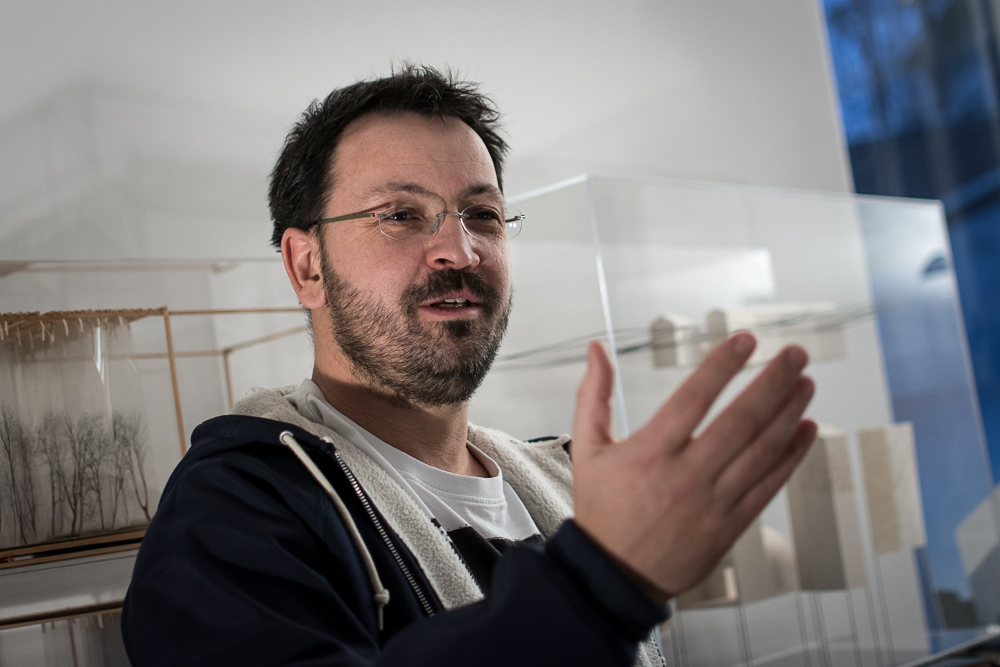Why was the Budapest Zoo an extraordinary project?
I worked on one of the most special sites of Budapest, the Budapest Zoo for twenty years. Even our atelier was there, a true site-office. We moved from one ruin to another. We lived with elephants, hippos, rhinos, lions and mandrills. I felt the best in the tower of the Elephant House. It had a huge roof terrace among the Zsolnay domes and in the evenings we would watch the lights of the Széchenyi Thermal Bath from there. It had a magical touch. It was there that I learned that all tasks possess a given scale and the most important job of the architect is to recognise the scale.
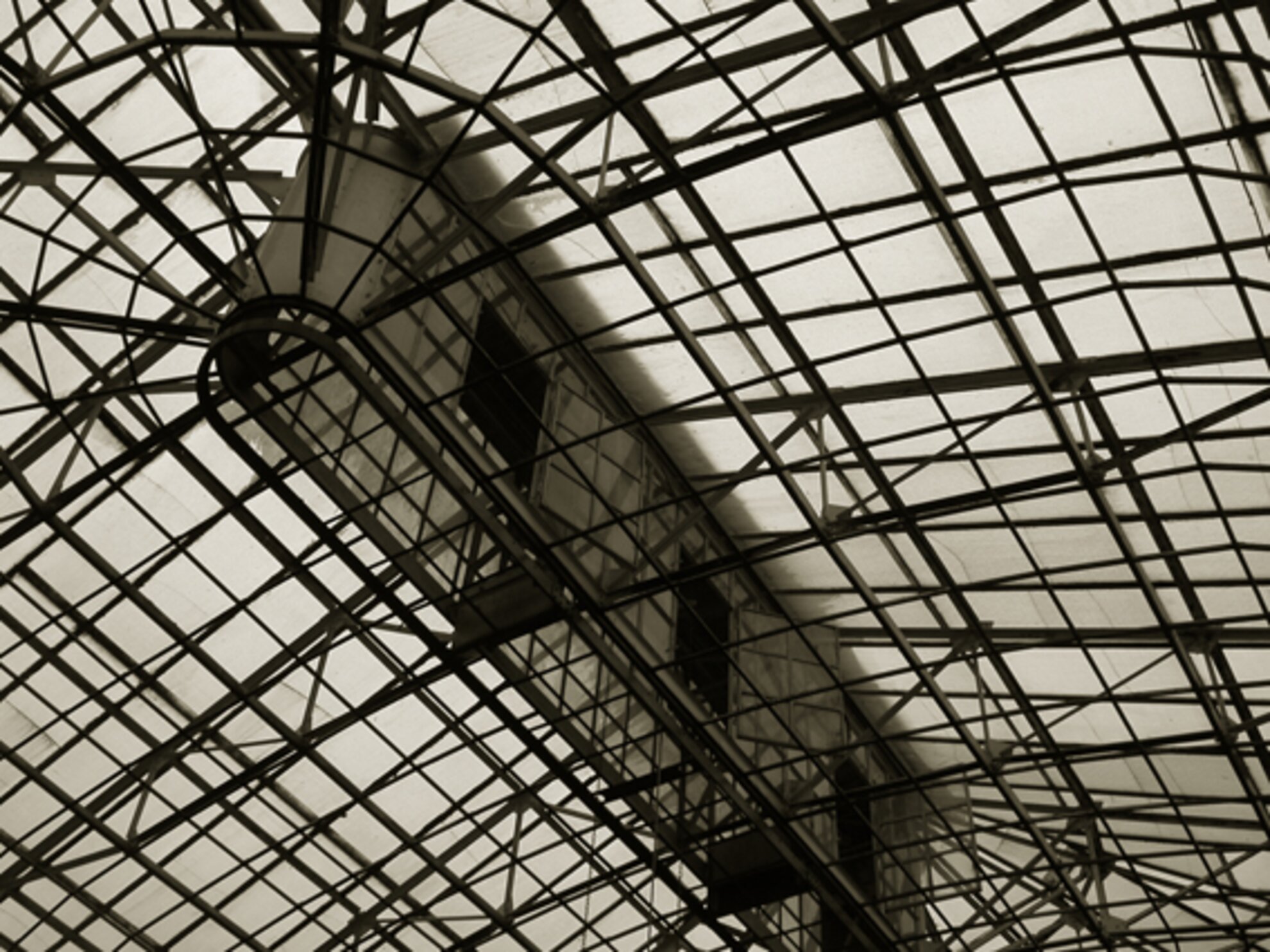
Is there any other building in the city that had the same influence on you?
At the Master School we collected some buildings with some of my mates, which were only familiar to a few people, but for us they were of special architectural significance. There was the Gozsdu Court, still abandoned at that time, the Füvészkert, which is the botanical garden of Eötvös University, the corridor of the second floor in the City Hall, the dressing room of Rudas Bath, where the tiles were constantly changed over the past one hundred years, the interiors of the Great Rock, the run-down Great Market Hall, and a hotel on the Széchenyi Hill that you access through a round-shaped bridge. We planned that we'd publish a Baedeker style guidebook about them, in which we would mark where these sites could be found in relation to better known touristic landmarks. We wanted to show that even if we live here, we walk like strangers in the city, and that if we leave the streets and buildings we already know, we can find very special places. In the end we didn't make it, but it was a lot of fun.
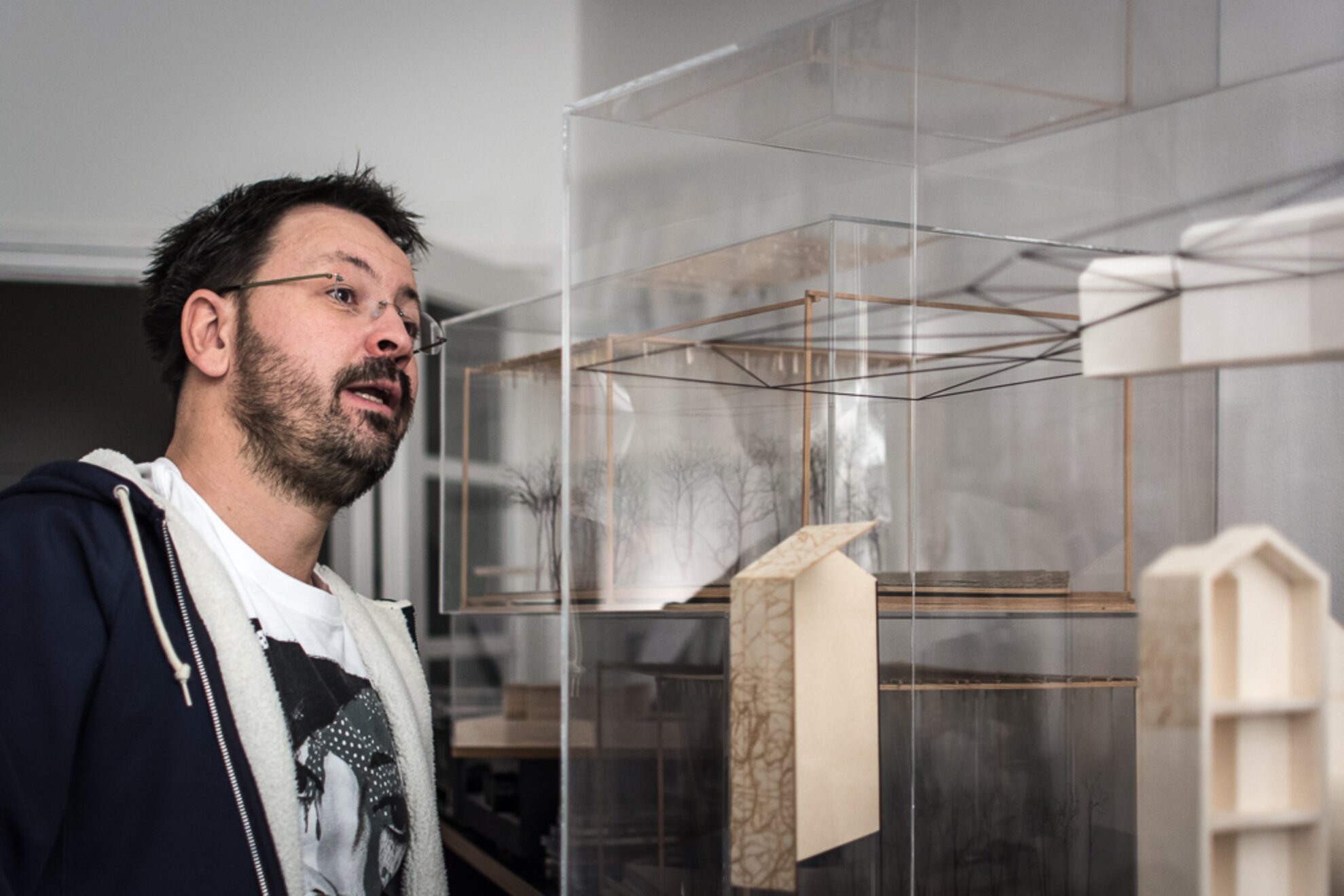
The 19th and 20th centuries left quite a number of iconic buildings for us. How do you see the future of Budapest?
The scale of a metropolitan Budapest has been determined by its geomorphologic features. This was recognised and used when it came to city development. Instead of ruining the view, the urban mistakes made during the development of the eclectic Pest side made the city view more spectacular. Budapest is actually like a theatre. The set is the Buda Hills, on the stage there is the Gellért Hill, the Buda Castle and the Rózsadomb. Pest is the viewing area, slowly elevating and reaching the level of Gellért Hill at Sashalom. The Danube flows in the orchestra pit. But this is true the other way around too. Pest has its own show with its own bonvivants and primadonnas, celebrated in Buda's best theatre boxes. This way, the city always reflects on itself. The two sides are each other's special viewing points - they reflect, they multiply each other. Still, it's strange that Budapest really only has one of everything; one boulevard: Andrássy Avenue, one square: Heroes Square, one island: Margaret Island, one park: City Park, and one popular hiking spot: Normafa.
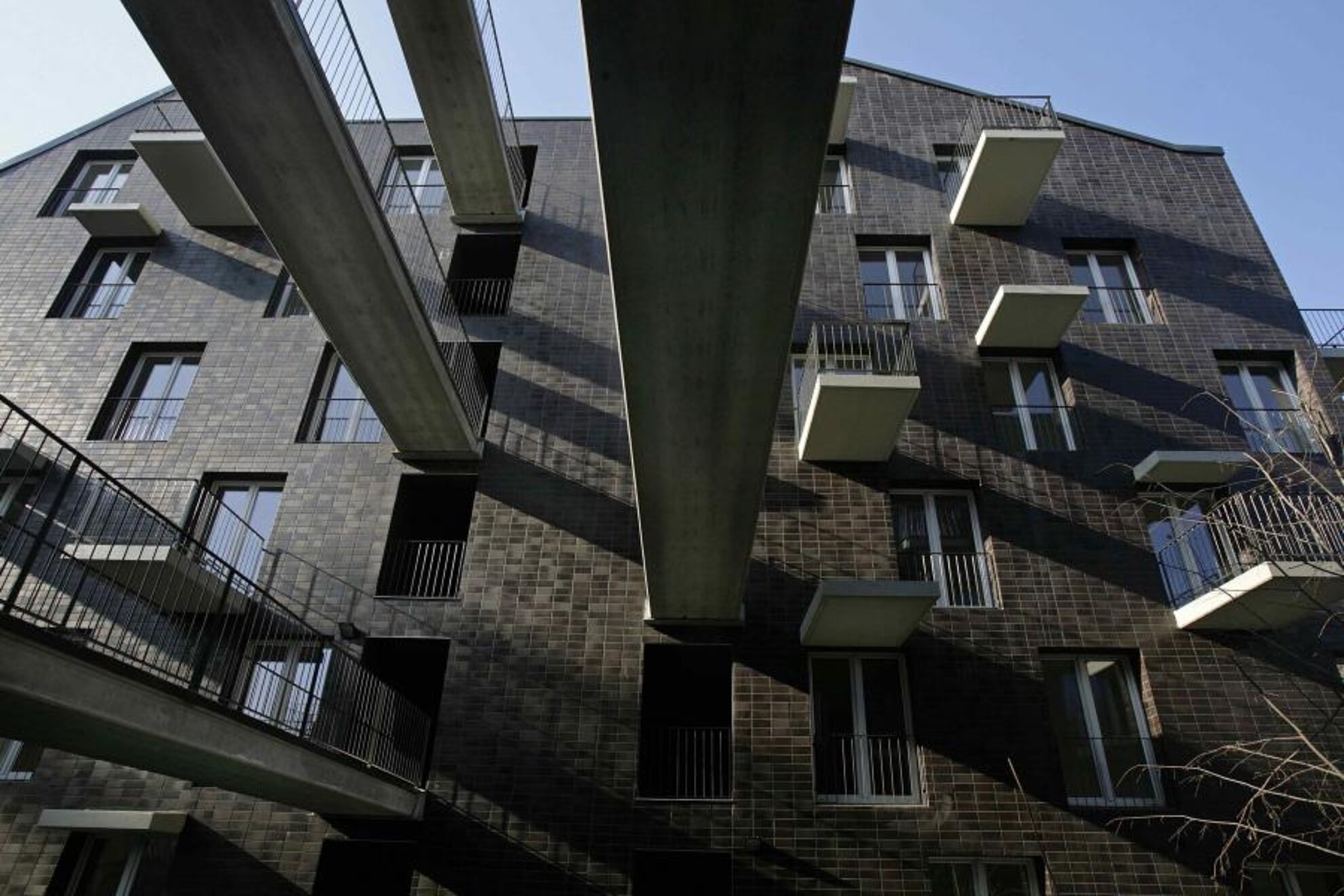
What would you modify in the city's structure?
Imagine a city with green boulevards — such as Andrássy Avenue — at Váci, Podmaniczky, Rákóczi, Üllői and Soroksári roads, with an extraordinary square at the end of each, like the Ludovika, the Keleti Railway Station, Heroes' Square or MÜPA. On the Danube there would be a chain of islands with public functions on both sides of the river. A ring of continuous parks (after the idea of Csaba Kovács) on the boundaries of the city centre and in the "rustzone" - where it's likely nothing will happen in the next few decades. These would create another green ring of forests and parks, completing the natural half-circle of the hills on the Buda side. The city encircled by two green rings sounds like an idealistic utopia for a metropolis.
What other hidden opportunities does the city have?
Until this day, we are not using the Buda Castle fully, the Citadella, the banks of the Danube, the peninsula at Kopaszi Dam with the bay or the area of Pest on the opposite side, which is the only "riverside corner site." We can also mention Csepel or the Hajógyári Island. These places could be some of the best spots in the city if they had been developed properly and with care. We have to set back the scale of squares in the city centre, so that they could become public spaces again instead of crowded transportation junctions. We have to remove the overpass at the Nyugati and Keleti Railway Stations so that we have a full view of these boulevards again.
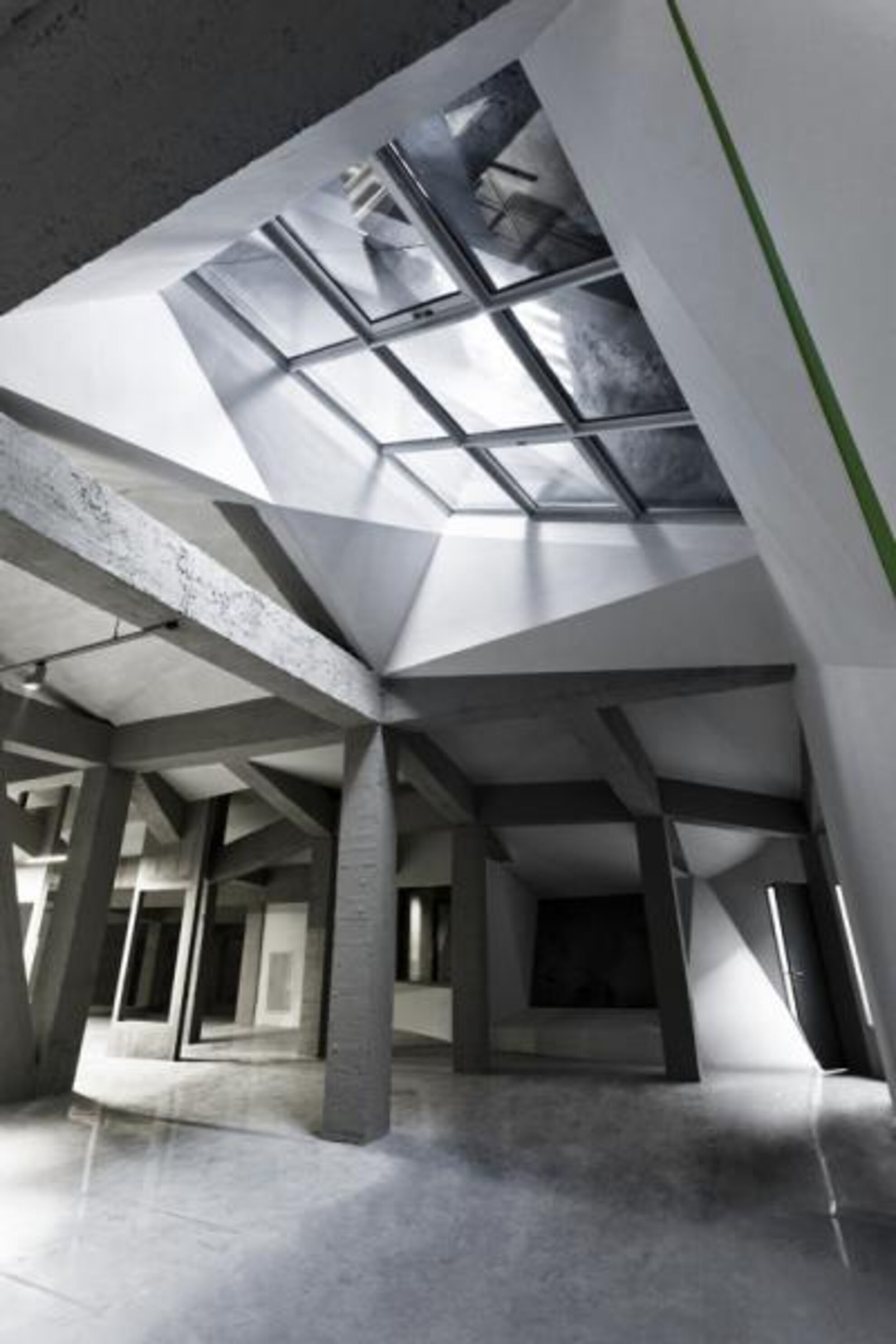
When you have gone abroad and come back, what do you miss the most once in Budapest again?
I would mention only one thing that got me the most: I have been in Milan multiple times, for theatre premieres in the Piccola Teatro, or for award ceremonies or exhibitions and even as a jury member of the Ugo Rivolta European Architecture Award for Italian architects. In Milan, visiting cultural events is as natural and ordinary as drinking a coffee or reading the news. How would a new landmark change the image of the city? What kind of creative buildings could come to exist?
For a radical example, I would say that a monumental building can be creative if it gets a special function and becomes a metaphor. After the opening of the Várkert Bazaar, the first studio was given by Franz Joseph to Alajos Stróbl, who had just finished his studies. This way, a sculptor's career had started and he created most of the extraordinary sculptures that you can find in Budapest. I'm absolutely sure that the freshly renovated Bazaar should have a Stróbl exhibition upon opening. Not only because his legacy is very well preserved, but also because an incredible amount of his work is still in storage at the Hungarian National Gallery. We must also remember how Stróbl came back from Vienna: he instantly got a workplace and a job - and a really good one at that! Isn't this the best call for a young man? The city is full of exciting challenges and still, we are trying to figure out why our most talented young colleagues live abroad. Of course, sometimes you can find a task for yourself, like Levente Polyák who started to research abandoned buildings and started to organise their reintegration into society. It would also be exciting to create a tower on the Pest side of the Danube, from where we could see the city from a new point of view, with the river curving as far as the eye can see.
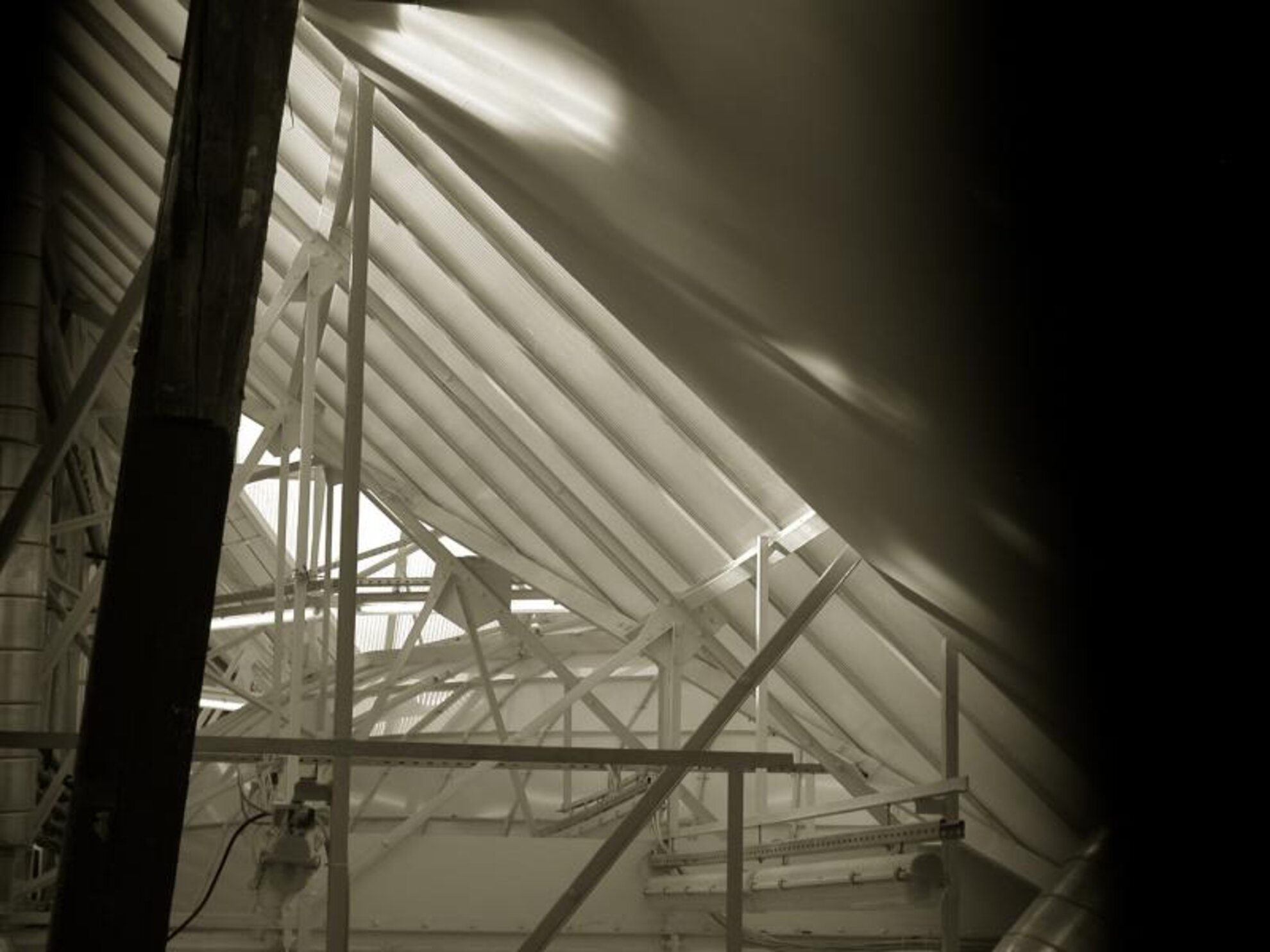
Is it true that you are a big horse rider?
No, unfortunately it is not! I'm aware of this precisely because I know people who have dedicated their whole lives to horses. Instead we could say that I'm a horse-lover. Being with them helps to recognise things that usually remain hidden. You can watch the horses quietly for hours as they wander around; on the other hand, if you're riding them, you have to make decisions in a split-second. This duality is a special aspect of being around horses. It helps to think about our future direction, how to be confident and reflective at the same time.
Could you tell us about the National Riding School plans?
As in many other places in Budapest, the task was to give order to an institution that had functioned well before the war. During the reconstruction of the Zoo we were faced with similar problems, so the answers in the renovation of the Riding School were also very similar.

How do you work with your team?
8-10 architects work together, and the scale of each project defines the size of each team. Only the best ideas, the most complex solutions are kept. My most important task is to choose the best idea. I think that you can lead a group as long as you manage this very task. If I made the wrong decisions from time to time, I would obviously have to find a different profession. The different layers of interpretation and the connection between these readings can make the creative process very exciting and the result poetic.
Do you regret that some of your buildings were not built?
Absolutely not. It's funny, because you usually can't tell which building would actually work, whereas an architect usually gets paid to see this beforehand. Of course everybody does his or her best, but the actual impact of a building stays hidden for a long time.
